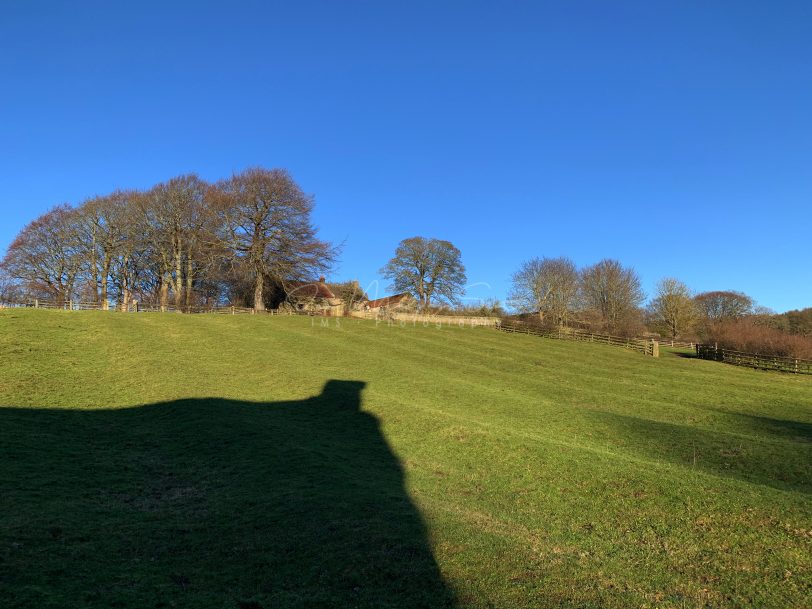![]()
Ring and furrow ploughed field in the Georgian landscape, Beamish Museum, County Durham.
Ridge and furrow is an archaeological pattern of ridges (Medieval Latin: sliones) and troughs created by a system of ploughing used in Europe during the Middle Ages, typical of the open-field system. It is also known as rig (or rigg) and furrow, mostly in the North East of England and in Scotland.
The earliest examples date to the immediate post-Roman period and the system was used until the 17th century in some areas, as long as the open field system survived. Surviving ridge and furrow topography is found in Great Britain, Ireland and elsewhere in Europe. The surviving ridges are parallel, ranging from 3 to 22 yards (3 to 20 m) apart and up to 24 inches (61 cm) tall – they were much taller when in use. Older examples are often curved.
Ridge and furrow topography was a result of ploughing with non-reversible ploughs on the same strip of land each year. It is visible on land that was ploughed in the Middle Ages, but which has not been ploughed since then. No actively ploughed ridge and furrow survives.
The ridges or lands became units in landholding, in assessing the work of the plougher and in reaping in autumn.
![]()


